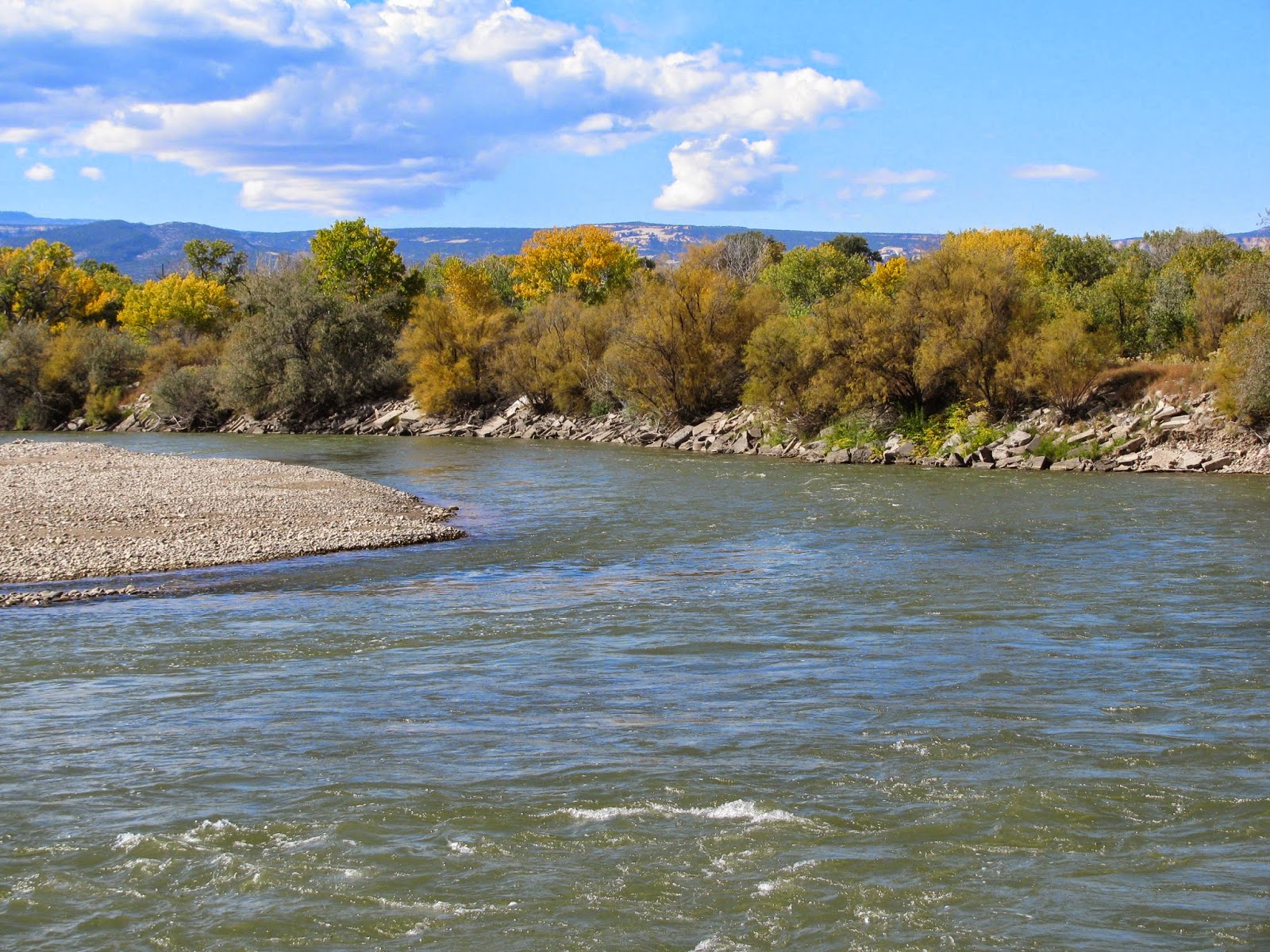Grand Junction, Colorado
I have long been fascinated by places where the natural and urban worlds intersect. An abandoned factory choked by foxtail barley, sumac, and snakeweed is an intriguing maze of metal and cellulose. A decommissioned iron girder bridge presents a paradise for barn swallows and their oval mud-daubed nests all in a row. And while it is always a delight to find a beaver dam, the discovery is just a touch surreal when suburban tract houses are within view of the structure’s tangled branches.
 But perhaps the most important source for Grand
Junction’s areas of untamed flora and fauna is the Colorado River. Grand
Junction is the largest metropolis on the Colorado’s 1500 mile passage from La
Poudre Pass in the Rocky Mountains to Mexico’s Sea of Cortez. The river divides
the city, and the municipal and state governments have kept Junction’s riverbanks
largely undeveloped, preserving them as wetlands. Thus, in Grand Junction, surrounded
by homes and businesses, streets and highways, the Colorado is a corridor for
the natural world.
But perhaps the most important source for Grand
Junction’s areas of untamed flora and fauna is the Colorado River. Grand
Junction is the largest metropolis on the Colorado’s 1500 mile passage from La
Poudre Pass in the Rocky Mountains to Mexico’s Sea of Cortez. The river divides
the city, and the municipal and state governments have kept Junction’s riverbanks
largely undeveloped, preserving them as wetlands. Thus, in Grand Junction, surrounded
by homes and businesses, streets and highways, the Colorado is a corridor for
the natural world.
Along much of this corridor, city and state
agencies have constructed a series of trails, and after a long day in the
classroom, I often head for the Colorado River Trail system. There, sometimes
mere yards from city streets, I can walk through groves of cottonwoods, Russian
olive, and tamarisk, skirting lakes, streams, canals, and sometimes the river
itself.
 A partial list of the natural denizens I have
spotted near these trails includes cottontail rabbits, jack rabbits, gray
squirrels, mule deer, beaver, great horned owls, red-tailed hawks, Swainson’s
hawks, northern flickers, orioles, ravens, magpies, great blue herons, Canadian
geese, mallards, wood ducks, spadefoot toads, leopard frogs, whiptail lizards, garter
snakes, praying mantis, and monarch butterflies. Once I walked through hundreds
of golden dragonflies mysteriously swarming around a fallen cottonwood trunk;
another time I came upon a nest filled with newly hatched mallard ducklings.
There are often surprises like these, natural encounters I would expect in the
deep wilds, not within the sound of car horns.
A partial list of the natural denizens I have
spotted near these trails includes cottontail rabbits, jack rabbits, gray
squirrels, mule deer, beaver, great horned owls, red-tailed hawks, Swainson’s
hawks, northern flickers, orioles, ravens, magpies, great blue herons, Canadian
geese, mallards, wood ducks, spadefoot toads, leopard frogs, whiptail lizards, garter
snakes, praying mantis, and monarch butterflies. Once I walked through hundreds
of golden dragonflies mysteriously swarming around a fallen cottonwood trunk;
another time I came upon a nest filled with newly hatched mallard ducklings.
There are often surprises like these, natural encounters I would expect in the
deep wilds, not within the sound of car horns.
Now, I do not want to give the impression that
these trails are untouched wilderness. The city certainly intrudes. On the
trail that skirts Corn Lake, where massive cottonwoods face high shale bluffs
along the Colorado, the thrumming sound of the Halliburton plant is frequently
an unavoidable irritation. Along much of the trail, one can hear the snap and
buzz of the high tension power lines overhead. Occasionally, the smell of
diesel exhaust wafts through the air. Drained beer cans, used disposable
diapers, and charred fast-food wrappers grace the trail’s border. One day I
came upon an unlabeled five gallon glass jug sitting alone in the midst of an alkaline
flat, a strange mystery my terrier-mix dog Myla approached with great
trepidation. And tucked away in the tamarisk labyrinths stand the homeless
camps, their plywood lean-tos and canvas shelters a reminder of our nation’s
economic and social inequities.
Still, the Colorado River Trail system provides a quick escape from the city’s tame landscape, reminding us that despite all the recent urban and industrial development in the Southwest, nature is still in charge. As Frank Waters expresses it in his exemplary portrait of the region, The Colorado (Swallow Press, 1946): “This is a country where the land predominates, not man. It contains the highest peaks, the largest mountain ranges, the widest plateaus, the deepest cañons, and the lowest deserts in America. Geology here forever dominates life and gives it its ultimate meaning” (4).
Postscript
There is a wonderfully written review by Suellen Alfred of Land
of Cinnamon Sun in the on-line creative non-fiction magazine Under
the Sun. You can access it at http://underthesunonline.com/review-of-nizalowskis-land-of-cinnamon-sun/
In addition, there is a nicely done photo feature of Land of Cinnamon Sun and other offerings
from Irie Books in a blog run by Longhouse Publishers & Bookstore. The
other books pictured with my collection are The
Street by Aram Saroyan and Places of
Mystery, Power, and Energy by Bill Worrell, again all on Irie Books. You
can access this feature at http://longhousepoetryandpublishers.blogspot.com/2014/09/irie-books.html
Also of interest: Grand
Canyon Backpacking Stories edited by Rick Kempa is the first-ever anthology
devoted to the Grand Canyon backpacking experience. In it, twenty-seven writers
offer tales that encompass the full range of the canyon backcountry experience:
adventure, discovery, danger, deep solitude. Novice hikers express their
wide-eyed wonder, while veteran canyoneers reflect on how the place has shaped
their character. Rangers, trail workers, scientists, and guides provide unique
perspectives. Writing from the corridor trails, the backcountry trails, and the
vast canyon wilderness, the authors offer intimate views of what it is like to
be afoot beneath the rim. For more information, visit http://www.vishnutemplepress.com/.
To read the table of contents and the introduction, visit rickkempa.com.

No comments:
Post a Comment